How to Grow Persian Buttercups: Fine Tips
Empower yourself with the knowledge and techniques outlined in “How to Grow Persian Buttercups,” for achieving stunning results in your Persian Buttercup garden. Learning how to grow Persian Buttercups allows you to cultivate these stunning flowers and witness their beauty firsthand.
The Persian buttercup is a type of flowering plant that is highly adored for its vibrant and intricately ruffled petals, tall and elegant stem, as well as its impressive longevity when used as a cut flower. These flowers exhibit a captivating array of colors, ranging from vivid shades of pink, red, and purple to more delicate hues of cream, pale yellow, and orange. It is no wonder that they are widely cherished and frequently sought after in florist shops and as a popular choice for wedding bouquets.

To ensure optimal growth, the Persian buttercup thrives in sunny flowerbeds that receive abundant sunlight, preferably at least six hours daily. It also requires well-draining soil with a sandy texture, enabling proper moisture regulation. The plant prefers temperatures that remain below 90 degrees Fahrenheit, as excessively high temperatures may impede its growth and development. With the right conditions in place, this species demonstrates a relatively rapid growth rate, typically reaching its blooming stage in the late spring or early summer. When you grow Persian Buttercups, you’ll be rewarded with vibrant and enchanting blooms that bring a touch of elegance to your garden. Unleash your green thumb with the comprehensive guide on how to grow Persian Buttercups.
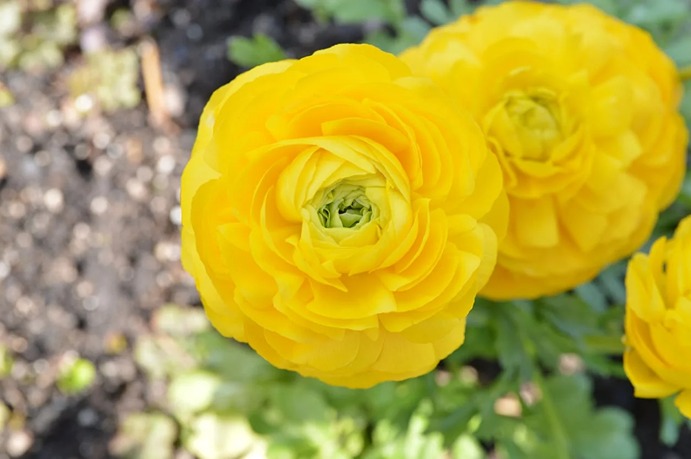
Persian Buttercup Care
To ensure successful growth of Persian buttercups, it is important to follow these primary care guidelines:
- Planting Time: In warmer climates, it is recommended to plant the Persian buttercup outdoors during the fall season. However, in colder regions, it is best to plant them in the early spring.
- Planting Technique: When placing the bulbs in the soil, ensure that the end resembling claws or protrusions is facing downwards. This is the correct orientation for optimal growth. Cover the bulbs with approximately 1 to 2 inches of soil to provide adequate insulation and protection.
- Annual Growth: For the best results, it is recommended to treat Persian buttercups as annual plants. Overwintering these flowers can be challenging and may not yield satisfactory results. Therefore, it is advisable to replant them each year to ensure vibrant and healthy growth.
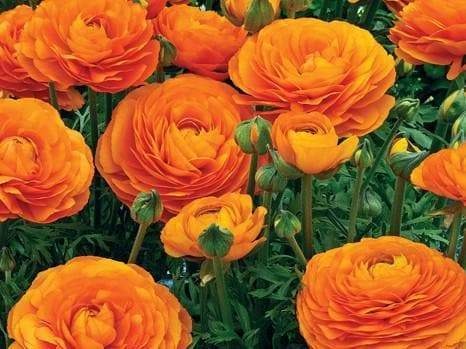
Light
To ensure optimal growth and blooming, Persian buttercups thrive when planted in a location that receives full sun exposure. This means providing them with at least six hours of sunlight on most days. By selecting a planting site that offers abundant sunlight, you can encourage the best possible development of these flowers.
Soil
Persian buttercups have a preference for sandy or loamy soil that possesses excellent drainage capabilities. It is beneficial to cultivate them in soil that allows water to pass through easily, preventing waterlogging and ensuring the roots receive adequate oxygen. If your soil tends to be heavy or poorly draining, you can enhance it by incorporating compost or opting for raised garden beds, which allow you to have more control over the soil composition.
Water
While it is not mandatory to soak the bulbs before planting them, if you choose to do so, it is important not to overdo it. A soaking period of one to four hours is sufficient to avoid encouraging mold growth. After planting, it is crucial to provide the bulbs with a thorough watering. However, once the initial watering is complete, it is advisable to withhold further watering until signs of growth appear. This precautionary measure helps prevent rot. Once the Persian buttercups have become established, they prefer moderately moist soil.
Temperature and Humidity
Persian buttercups thrive in cooler spring weather and exhibit their best growth during this season. As summer temperatures exceed 90 degrees Fahrenheit, these plants tend to enter a dormant state. To prolong their growing period and keep the roots cool, it is beneficial to apply a layer of mulch around the plants. This protective layer helps to maintain lower soil temperatures and supports the continued development of the Persian buttercups. While they are not excessively sensitive to humidity levels, it is important to note that very high humidity can potentially lead to bulb rot and the demise of the plant.
Fertilizer
Before planting the Persian buttercup corms, it is recommended to incorporate some compost or bulb fertilizer into the soil of the chosen planting site. This provides essential nutrients for the plants’ growth and development. If you are growing them in containers, a biweekly application of water-soluble fertilizer is advisable. Follow the instructions on the product label to determine the appropriate amount of fertilizer to use. This regular feeding ensures that the Persian buttercups receive the necessary nourishment to thrive and produce vibrant blooms.
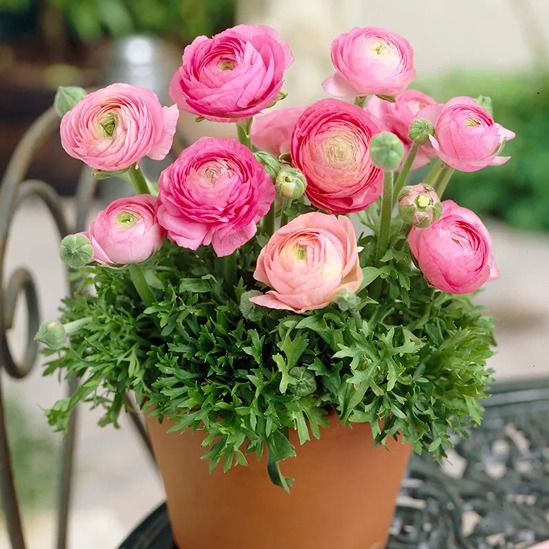
Types of Persian Buttercup
There are various types of Persian buttercups available, each displaying unique characteristics. Some notable varieties include:
- Ranunculus asiaticus ‘Tecolote Red’: This particular variety showcases stunning deep red blooms that typically measure between 3 to 6 inches in diameter. The rich hue of these flowers adds a touch of elegance and vibrancy to any floral arrangement or garden display.
- Ranunculus asiaticus ‘Bloomingdale’: Known for producing large flowers, this variety offers a diverse range of colors. These impressive blooms come in multiple shades, providing a captivating and eye-catching display when grown together. The wide color palette allows for creative combinations and arrangements.
- Ranunculus asiaticus ‘Café’: With its unique bronze-colored blooms, this variety adds a touch of warmth and sophistication. The bronze hue adds a distinct element to floral arrangements, creating a captivating contrast against other flowers or foliage.
- Ranunculus asiaticus ‘Flamenco’: This variety boasts charming flowers that combine vibrant shades of yellow and orange. The petals often feature red hues around the edges, creating a delightful and eye-catching color gradient. The blend of warm tones adds a lively and energetic feel to any floral composition.
- Ranunculus asiaticus ‘Merlot’: Offering a captivating contrast, this variety showcases both deep red-purple flowers and white flowers. The combination of these contrasting colors creates a striking visual impact. The interplay between the rich red-purple and the pure white petals adds depth and interest to floral arrangements.
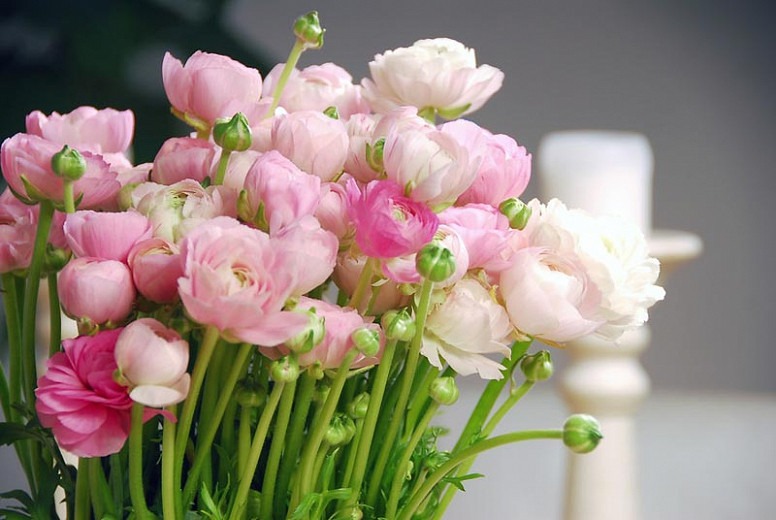
Pruning
To maintain an appropriate shape and size when keeping Persian buttercup indoors, you have the option to trim the foliage as desired. This helps in controlling the plant’s growth and ensures it remains visually pleasing in an indoor setting. Whether grown indoors or outdoors, it is recommended to deadhead the faded flowers. Removing these spent blooms promotes the production of more flowers and contributes to a neater appearance. However, if you are growing Persian buttercup as a perennial in the garden, it is important not to trim the foliage after blooming. Allowing the foliage to naturally die back plays a crucial role in the plant’s life cycle. During this period, the foliage absorbs sunlight and vital nutrients, which are then stored in the corm. These stored resources provide nourishment for the following season’s growth and flowering.
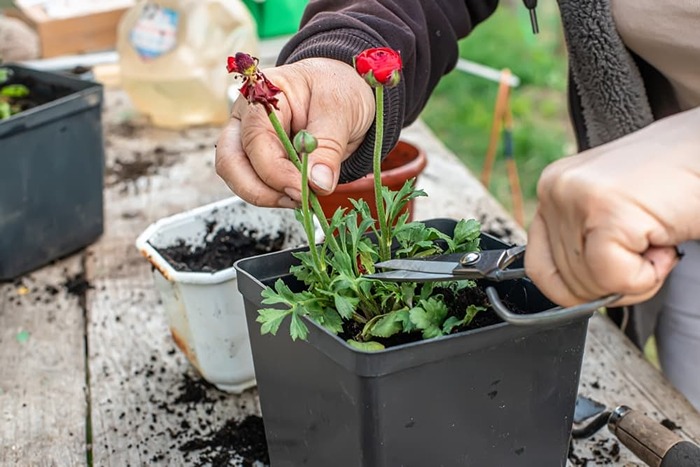
Propagating Persian Buttercup
You have two straightforward methods for propagating Persian buttercup: division and seed propagation.
Division
In the fall, when opting for division as the propagation method, use a shovel to carefully dig up the corms. Many of these corms will have produced offsets or small seed corms. If your hardiness zone is 8 or higher, you can easily divide the corms using a sharp knife. Plant the offsets in a new location, ensuring that they are positioned with the fingers pointing downward, and bury them about one to two inches deep in the soil. Thoroughly water the newly planted offsets and maintain even moisture in the soil by watering every couple of days. After a few weeks, new shoots will emerge from the planted offsets, signifying successful propagation.
Seed Propagation
Another method to propagate Persian buttercup is through seeds. Collect the mature seeds from the plant and sow them in a well-prepared seed-starting mix during the appropriate planting season. Provide the seeds with adequate moisture and warmth to encourage germination. As the seedlings develop, transplant them into individual containers or a suitable garden area, following proper spacing recommendations.
Storage for Winter (below Zone 8)
If you reside in a hardiness zone below 8, Persian buttercup is typically grown as an annual. However, you can still preserve the corms during winter for replanting in the following spring. After harvesting the corms, remove excess dirt and store them in a cool, well-ventilated location away from direct sunlight. Using a crate or box filled with coir, a sustainable alternative to peat moss, helps maintain appropriate moisture levels. In the spring, soak the corms in warm water for one hour to prepare them for planting, and then follow the planting instructions mentioned earlier to establish them in the desired location.

How to Grow Persian Buttercup From Seed
Growing Persian buttercup from seeds is another viable method of propagation. Follow these steps to successfully grow them from seeds:
- Collecting Seeds
When the flowers of the Persian buttercup start to fade, cut off the flower heads. Keep in mind that seeds obtained from hybrid varieties may not produce plants that resemble the parent plants accurately.
- Drying the Seeds
Place the cut flower heads in a paper bag and allow them to dry for approximately one week. This drying period helps in the maturation of the seeds.
- Seed Extraction
After a week, gently shake the bag to dislodge the seeds. Be cautious as the seeds are small, so open the bag carefully to avoid scattering them.
- Indoor Sowing
Start the seeds indoors a few weeks prior to the final frost date in your region. Ensure that the soil is evenly moist, and sow the seeds on top of it. Maintain daytime temperatures between 60 to 70 degrees Fahrenheit (15 to 21 degrees Celsius). It is important to keep the seeds away from direct sunlight and drafts.
- Germination
Germination usually occurs within approximately two weeks. During this period, provide a good light source for the seedlings to promote healthy growth.
- Transplanting
Once the seedlings have developed four sets of true leaves, they are ready to be transplanted into separate containers. However, refrain from planting them outdoors until all risks of frost have passed in your area.
- Hardening off
Before transplanting the seedlings into the garden, it is essential to gradually acclimate them to outdoor conditions. This process, known as hardening off, involves exposing the seedlings to outdoor elements such as sunlight, wind, and temperature fluctuations over a period of several days. This helps the seedlings adjust to the outdoor environment and reduces the risk of transplant shock.
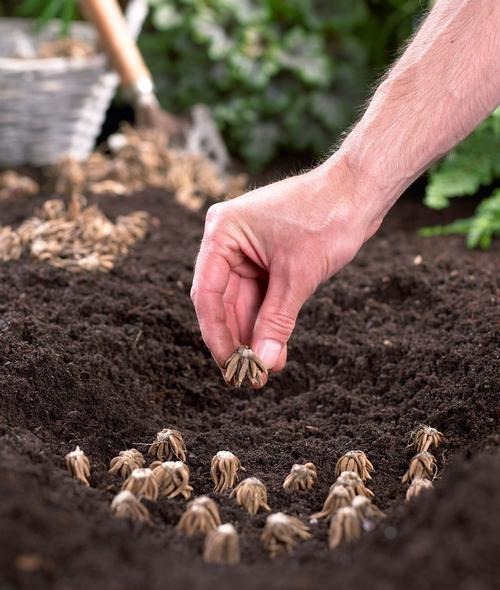
Potting and Repotting
Persian buttercups are commonly cultivated in containers, especially in regions outside their hardiness zones. When potting them, select containers that have sufficient drainage holes at the bottom. Fill the container with a well-draining, all-purpose potting mix. If planting multiple corms in the same container, ensure they are spaced three to four inches apart. Bury the corms about two inches deep in the soil, making sure they are adequately covered. After planting, water the corms thoroughly, and place the container in a location that receives full sun to facilitate optimal growth and blooming.
Overwintering
In regions within their hardiness zones, overwintering Persian buttercups is relatively straightforward. Before winter arrives, trim the plants back to ground level and consider adding a layer of mulch to provide some protection. However, in areas with harsher winters, the success of overwintering corms in the ground is uncertain. If you decide to attempt overwintering, dig up the corms and store them in a dry location. A medium like coir can be used for storage. It is important to note that storing corms in colder regions often yields limited success.
For Persian buttercups grown in containers, it is advisable to bring them indoors to a warm location for the winter season. This protects the plants from the adverse conditions and helps ensure their survival during the colder months. By providing a suitable indoor environment, you can help maintain the health and vigor of your Persian buttercups until the arrival of warmer weather.

Common Pests and Plant Diseases
Persian buttercups are susceptible to various pests and diseases that can impact their health and appearance. Here are some common issues to be aware of:
Pests
Spider mites, leaf miners, and aphids are pests commonly attracted to Persian buttercups. These pests feed on the plant’s leaves, causing damage such as splotchy discoloration, withering, and a yellowish-brown appearance. To control aphids, you can create a homemade spray by mixing water and mild dish soap in a spray bottle and apply it to the plant. This solution helps deter aphids from infesting the plant. For problems with spider mites and leaf miners, using an organic pesticide can be effective in mitigating their impact on the Persian buttercups.
Diseases
Persian buttercups can be affected by various diseases, including powdery mildew, necrotic spot, rust, and tomato spotted wilt virus. Powdery mildew is characterized by a white, powdery fungal growth on the leaves, stems, and flowers of the plant. Necrotic spot causes dark, necrotic lesions on the foliage. Rust appears as orange or brownish spots on the leaves, stems, and flowers. Tomato spotted wilt virus leads to wilting, necrotic spots, and distorted growth. To prevent or manage these diseases, it is important to maintain proper plant hygiene, such as removing and disposing of infected plant material, promoting good airflow around the plants, and avoiding overhead watering. In severe cases, applying appropriate fungicides or seeking professional advice may be necessary.



